Top 8 Social Commerce Platforms of 2023
Sudeepa Bose
Most people spend an average of two hours and forty-two minutes on social media platforms daily—not to catch up with online friends or share posts. They’re there to shop.
So, when shopping is going social, eCommerce merchants can promote their products and attract more customers by employing the most lucrative marketing channel – social media.
When you consider that 57%, or 4.59 billion people globally, use social media, it is clear that marketing on social media is an effective way to grow a business. And social commerce is the route to get your brand in front of more people.
The social commerce market has drastically grown in the past years. In 2021, the global social commerce market size was 620 billion, and it is expected to surpass $1 trillion in 2023.
Social commerce features are emerging across several platforms, creating new opportunities for brands, big and small. It is driving an increasing portion of the company’s marketing-driven revenue.
You can take advantage of many popular social media platforms to bring social commerce closer to customers. These social commerce platforms offer solutions to businesses looking to actualize social promotions and trade through social media.
So, if you want to know more about social commerce and how to catch onto this surging trend and make the best use of it. This blog offers loads of helpful information to give you a jump start. You’ll learn the following:
- What is social commerce?
- What is a social commerce platform?
- What are the benefits of social media platforms for businesses?
- Top 8 social commerce platforms of 2023
So, let’s get started!

What Is Social Commerce?
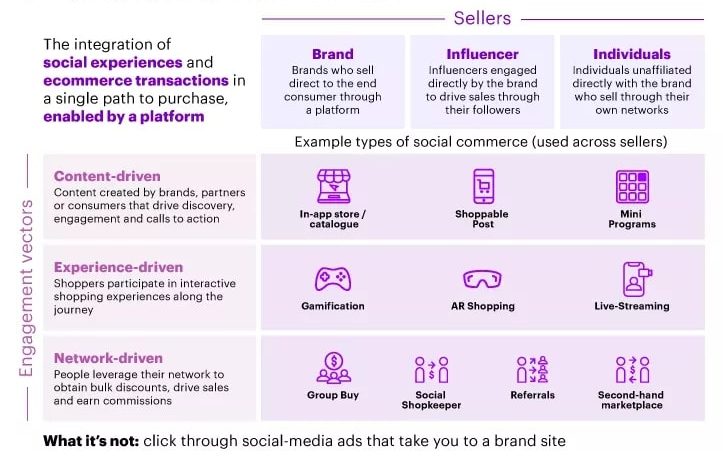
Social commerce is the art of buying and selling products/services directly within a social media platform. It helps companies be available on social media platforms, widening their brand audience and customer reach and improving online sales.
According to Hubspot’s 2022 research, 22% of customers prefer to explore new products via social media. Social commerce allows brands to offer a seamless e-commerce experience directly within social channels.
This is beyond the traditional social media role in the discovery process as it uses the social network to drive eCommerce sales and encourages users to complete the purchase without exiting their preferred apps.
Let’s look at a typical social commerce buying experience:
- Shoppers log into their favorite social media apps.
- While still in the app, they discover your product and learn about its features through posts, videos, stories, and other interactive elements.
- Shoppers then purchase the product without really leaving the app.
Unlike social media marketing, social commerce allows customers to check out directly from social media platforms or lead customers to the retailer’s product pages through links where the customer can also complete their purchase.

Here are some brand examples of social commerce:
- Domino’s Pizza taking orders through an automated Facebook Messenger flow
- Nike using Product Pins on Pinterest
- Best Buy Canada’s Shop tab on Facebook
- Gap using Instagram Guides for curated shopping lists
- Mac Cosmetics’ shoppable AR Lense on Snapchat
Social Commerce vs. E-commerce
While social commerce and e-commerce may fall under the same umbrella, they are very different concepts.
E-commerce covers transactions completed online via an e-commerce site, online store, or app. Here, the customers do not choose the products directly but select them based on photos or information provided by the seller.
Types of an e-commerce business:
- Business to business (B2B)
- Business to consumer (B2C)
- Consumer-to-consumer (C2C)
- Consumer to business (C2B)
Social commerce includes purchases made only on social media channels like Instagram, Facebook, or Twitter. Simply put, social commerce uses social commerce platforms to complete e-commerce transactions.
Types of Social Commerce:
- Video Commerce
- Promotions or giveaways
- Personalized buying options
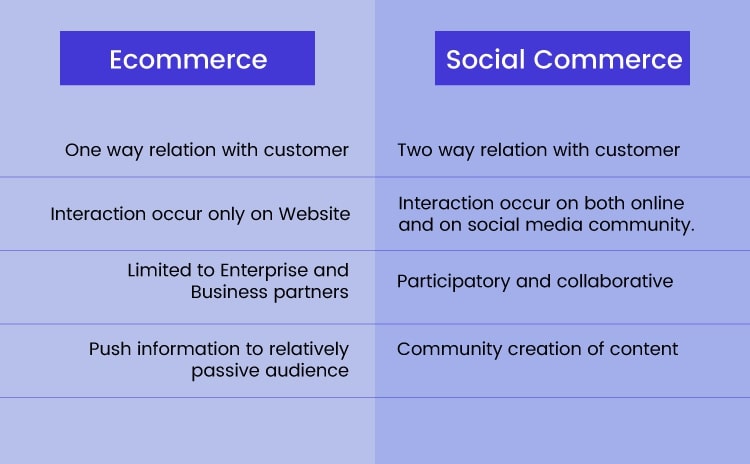
The e-commerce model of buying and selling goods online is far from perfect. In a mobile-first generation, over 50% of all internet traffic is from mobile devices, but mobile users have a higher cart abandonment rate. So, streamlining the checkout process is the key to success.
Here, social commerce removes the drop-off points, which result in abandoned transactions. Social commerce allows businesses to integrate products into different types of content, such as videos, posts, reels, polls, and much more, to draw more customers.
Every eCommerce business is taking the social commerce leap. According to the Haris Poll conducted on behalf of Sprout Social, around 73 percent of companies have already participated in social commerce.
They are taking advantage of social commerce platforms to get closer to customers by actualizing social promotions and trade through social media.
But what is a social commerce platform anyway?
Let’s explore.
What Is a Social Commerce Platform?
A social commerce platform entitles social media users to purchase products from brands without leaving the app, website, or dashboard.
It helps companies improve online sales by using social media platforms. Major social networking sites like Facebook, Instagram, Snapchat, Pinterest, and Tiktok have already become social commerce platforms.
It allows businesses to create a virtual storefront, upload product catalogs, share informative posts, and tag items in social media content. Social media users can search, browse, and buy products without the need to exit the app.
Businesses can connect and engage with potential leads, influencers, and buyers through social media channels through user-generated content, live streams, shoppable posts, referrals, gamification, and sometimes virtual reality (VR) or augmented reality (AR) technology.

Take the example of Allbirds. The footwear retailer uses Facebook and Instagram shops to reach their audience. They have more than 700,000 combined followers across both social commerce platforms.
Brands use social commerce platforms to create social media strategies and monitor social commerce campaigns. They ensure that the data shared on social media is accurate and complies with brand guidelines.
Brands calculate the campaign’s success by the extent to which customers interact with the company’s marketing through retweets, likes, and shares.
What Are the Benefits of Social Media Platforms for Businesses?
So, why is social media platform a big deal? The benefits of the growing marketing channel are numerous, but only the best are listed below.
Constant Audience Growth
The increase in social media platforms provides more opportunities for companies to reach a larger audience, making it an effective tool for building an extensive database of potentially loyal customers.
As customer acquisition costs are higher, social commerce is an effortless pivot to reach new customers and boost audience growth for small businesses. Making products accessible on social media platforms where users spend most of the time shortens the path to conversion.
Optimized SEO and High Ranking
When people interact and talk about your brand online on social platforms, it increases the website traffic, and the more visibility, the higher it ranks in the search engine results.
Create a solid social media marketing strategy and provide consistent, relevant content that offers an accessible channel for purchase. This will optimize your reach, maximize your overall ranking, and unveil your brand to new customers.
Boosts Brand Loyalty
Research indicates that around 71% of shoppers prefer purchasing from brands aligned with their values. Social media platforms allow businesses to exchange conversations and engage with their customers.
Creating a unique brand voice with consistent social media engagement boosts brand loyalty and other benefits of social commerce, like increased order value, social media engagement, etc.
Gain Customer Insight
Irrespective of the social selling strategy, not all social media platforms deliver the same results, but brands can gain valuable customer insights.
Social media platforms offer a host of analytics that help businesses track metrics like reach, impressions, and engagement and generate customer leads that brands can use to tailor their social media marketing strategy to connect with their actual audience.
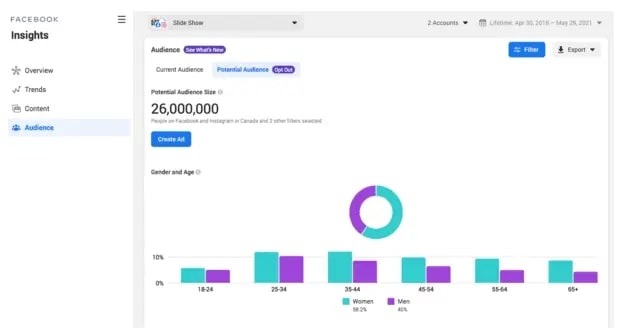
Some social media platforms offer two-way communication where you can directly interact with customers, answer their questions, and ask for feedback.
This will give you more insight into who your customers are and what interests them and help you improve your strategy.
Top 8 Social Commerce Platforms of 2023

Now that we’ve covered the fundamentals and benefits of social commerce platforms let’s take a look at the top eight social media platforms and what they offer.
Key Stats:
- Monthly global active users: Around three billion
- Largest age group: 25-34-year-olds
- Average time spent per day (US): 30 minutes
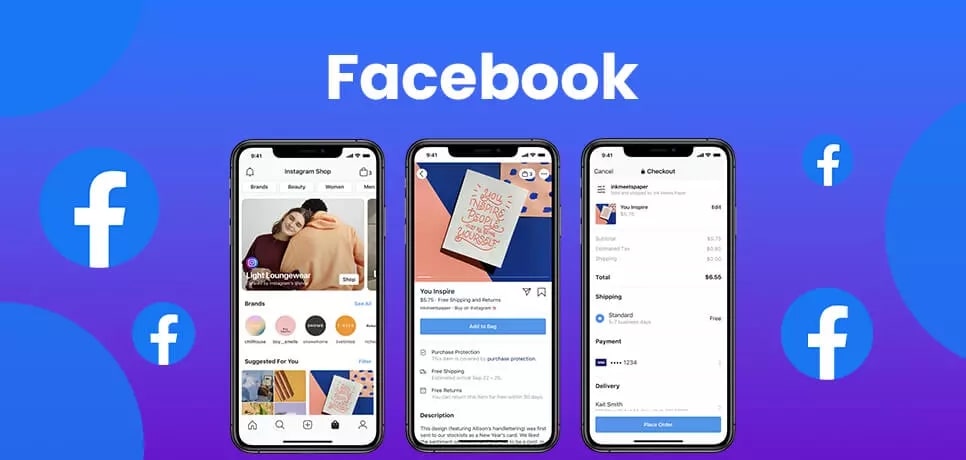
Reigning as one of the oldest social media platforms and the most popular social platform, Facebook is the most influential network that businesses can’t skip in their social media strategy.
Brands can increase their reach and grow their business on Facebook, which offers many ways to sell, such as the Facebook Shop, an in-built shopping feature that allows brands to list their entire eCommerce store and complete transactions.
Brands can also set up their brand page, where shoppers can purchase directly on the platform or through their online store. Facebook messaging and reviews are essential customer service and social media tools.
Key Stats:
Monthly global active users: Over two billion
Largest age group: 25-34-year-olds
Average time spent per day: 30 minutes
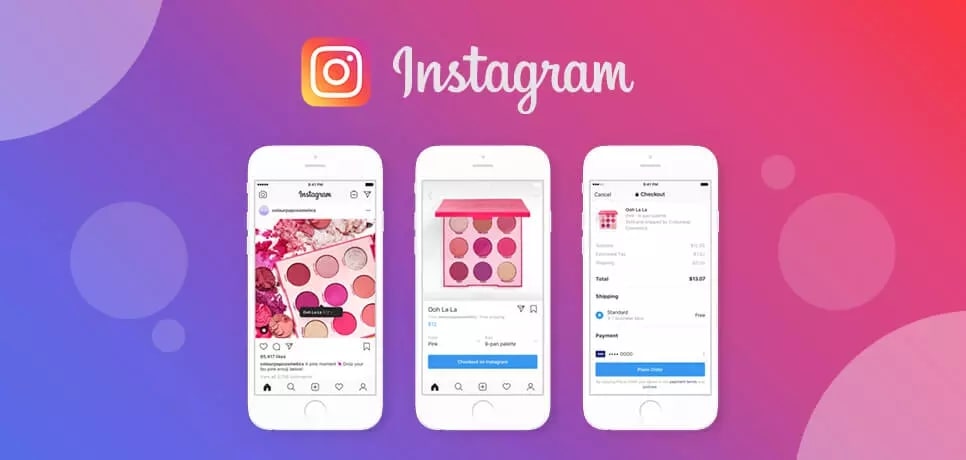
Instagram is one of the most widely used social commerce or video commerce platforms where this content is king. Over 80% of users refer to Instagram before making a purchase decision.
It connects brands and customers with “Shoppable Instagram,” which takes users on tour through Instagram feeds, Instagram Live, Stories, and IGTV. Users can explore and find a product that suits their needs and shop directly from the feed.
The ease of shopping via Instagram has made the platform a shopping hub, with 70% of shoppers looking for their next purchase. Leverage this feature to connect with customers while making sales.
Consumers also enter DMs with inquiries about products, questions, and feedback. This makes Instagram a valuable component of your social media customer service.
Key Stats:
- Monthly unique active users globally: Over two billion
- Largest age group: 26-35-year-olds
- Average time spent per day: 28 minutes

WhatsApp is the next big thing, rated as the most popular global messaging app. Over 175 million people interact with Business Accounts on WhatsApp, and WhatsApp Business API, the built-in feature – is facilitating the same, showing the power of the platform as a conversational commerce tool.
WhatsApp allows brands to connect with customers around the globe, personalize interactions, providing real-time business updates and timely support.
Brands can use this platform to send customer notifications for service-related chats and product recommendations. WhatsApp for Business is progressively being used by small businesses globally.
If you’re wondering how to employ Whatsapp for business, there are many options to choose from, such as standard customer care to creative marketing. Take Dior, for example, which recently launched a Whatsapp campaign to host exclusive conversations with a global influencer, Jisoo.

Further Reading – Whatsapp Business API Guide

What is Whatsapp Business API? How is it different from a Whatsapp Business account? What are the benefits of the API? Read more now!
Tiktok
Key Stats:
- Monthly global active users: One billion
- Largest age group: 10-29 years old
- Average time spent per day: 89 minutes

Known for less-polished, meme-y short videos, TikTok is a fast-growing social platform that has emerged as a search engine. It has everything, starting from fashion and food to trends and opinions. The vastness and wide-ranging audience of TikTok make it a perfect place to promote and sell products.
With a TikTok business account, you can enable TikTok Shopping and create a shopping page that showcases all of your products for customers to browse directly within the app. You can apply tags to your products in the TikTok videos, directing your audience to your shopping page to make a purchase.
Putting up authentic content on TikTok can build consumer trust in the platform. TikTok trends can help marketers understand what topics are relevant to younger consumers and inspire your other social content—on the app or other channels.
While TikTok remains a core platform to reach Gen Z, the app has aged up and is no longer the new kid in the block, making it possible to reach a more cross-generational audience.
YouTube
Key Stats:
- Monthly global active users: Over two billion
- Largest age group: 15-35-year-olds
- Average time spent each day (in the US): 45.6 minutes

YouTube is the top video commerce platform where people spend the most average time per day. It is a go-to entertainment, information-seeking, and problem-solving channel that allows brands to sell their products.
YouTube shopping facilitates brands to create and upload video content such as how-tos, product demonstrations, advice, or user stories to connect with the target audiences and market products.
Furthermore, sellers can use the same as catalogs. They can even promote products on YouTube Shorts, a short-form video feed consumers find 2.5 times more engaging than long-form videos.
YouTube also encourages interested users to explore and buy from YouTube without pausing the video or leaving the channel. Purchasing right from the platform boosts user engagement.
While entertainment is a content factor in market products, brands can also feature products in visually-appealing ways, just like Chipotle does.
The brand uses its channel for short films and celebrity features, but they also feature simple videos highlighting new dishes.
Key Stats:
- Monthly global active users: 433 million
- Largest age group: 50-64-year-olds
- Average time spent per day: 14.2 minutes
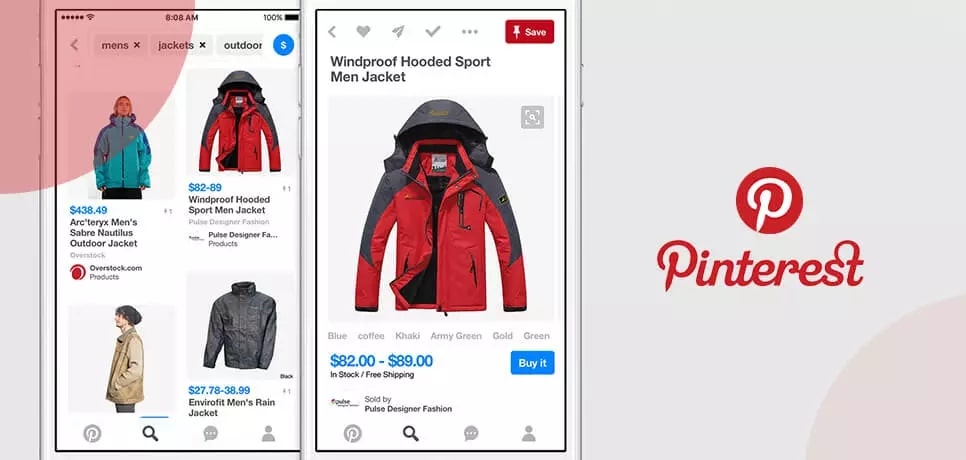
Pinterest has evolved as one of the top social shopping platforms and consumers’ go-to platforms for inspiration and finding new brands.
The Shop-the-Look Pins have made it a big game-changer for businesses involving home decor, fashion & beauty, etc., for spotting emerging trends and targeting niche audiences.
In 2015, Pinterest released its unique feature – Pinterest Buyable Pins – that authorizes audiences to buy products from posts. Users can see tiny white dots on product posts, browse products, and buy from mobile & desktop without the disturbance of any ads.
Like Instagram, Pinterest concentrates on visual elements perfectly appropriate for Social Commerce. Check out how Whole Foods uses Pinterest for inspiring and visually appealing posts and how they naturally plug their products.

Key Stats:
- Monetizable daily active users: 237 million
- Largest age group: 18-29-year-olds
- Average time spent per day: 34.8 minutes

Twitter is one of the leading social media platforms that help brands keep up with the trending conversations their target audience talks about.
While Twitter may have the reputation of being more of an information-sharing media than an online marketplace, the social media platform has rolled out new social commerce features to push the audience from just talking about products to buying them.
One of Twitter’s new features, Twitter Spaces, enables brands to have live conversations with their audience. You can promote it beforehand and Tweet about it later.
With Twitter Shops, brands can list a curated collection of products on their profiles. The “View Shop” button on these profiles allows shoppers to browse collections, learn about the products, and make a purchase.

Brands can also receive direct customer feedback and questions, making the platform a powerful place to collect consumer insight and improve products, services, or social content.
And being responsive here is the key to better social media customer service and building your brand’s image. Twitter customer care interactions drive a 58% better attitude towards brands.
Key Stats:
- Members worldwide: 830 million
- Largest age group: 25-34
- Average time spent per day: 34.8 minutes

The world’s largest professional network, the LinkedIn platform isn’t just buttoned-up job postings anymore. It is now a critical aspect of B2B marketing, and there are sufficient reasons brands should consider developing their LinkedIn strategy.
Almost every business can benefit from this social media platform through lead generation by hyper-targeting their audience using rich demographic data and interest-based filtering.
Brands use LinkedIn to find and connect with other small business owners and entrepreneurs, which can build successful relationships and drive sales.
LinkedIn may not be the silver bullet for e-commerce success. Still, with a successful LinkedIn business strategy, it’s a great platform to grow your brand and increase your online visibility.
Drive Social Commerce Success with Juphy
Juphy is an award-winning, all-in-one, next-generation social media management platform that empowers brands to get the most from our powerful social commerce tools to scale up, sell more, and stay ahead of the competition.
Juphy has integrations with the most popular social commerce platforms – Facebook, Instagram, Twitter, YouTube, Whatsapp, Linkedin, Google Play Store, Google My Business, and IOS App Store —and is loaded with powerful features.
Juphy’s social inbox helps to manage all your interactions (messages, comments, etc.) from multiple social media accounts in a single dashboard. Comment moderation helps to manage and respond to all comments and DMs in one place.
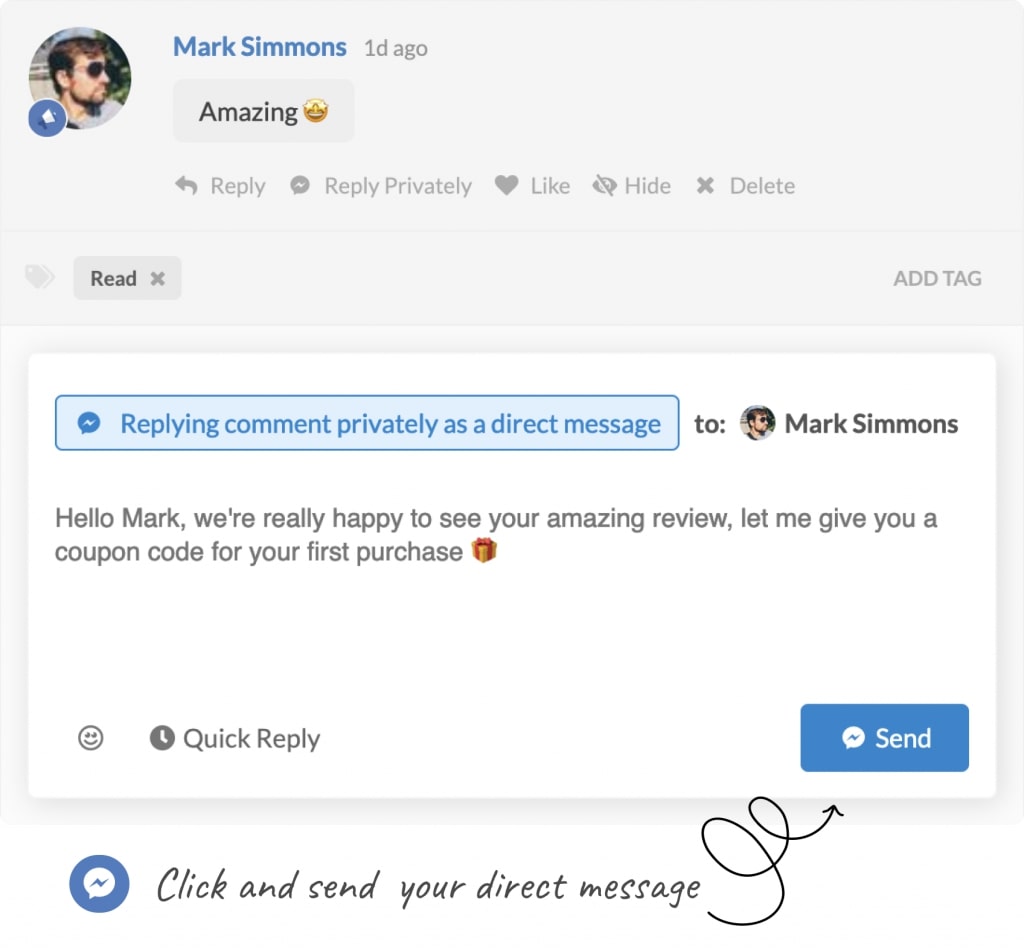
Juphy also helps to practice social listening, so you never miss a comment, mention, or message. Setting up social listening across all platforms can also be a great way to catch feedback or industry news outside your bubble.
The automation rule helps to categorize, manage and measure inbound messages based on content, urgency, and tone. This automation setting will tag each incoming message, including the specified keywords, and put them under the relevant label.
Juphy’s feature also lets you in reputation management by hiding or deleting inappropriate comments that could ruin the shopping experience for your users.
Canned response feature helps to give instantaneous shopping experiences to customers by responding to the most common questions with pre-written messages at the drop of a hat.
Reports provide real-time visual dashboards and deep insights on product performance across social shops to help optimize business results.
Final Words
Social media platforms have bridged the distance between brands and their users. We all know that social media drives engagement, but a solid social media management tool can help brands to strengthen their customer base using these social media platforms.
It’s time that your brand considers using the social commerce platforms listed in this blog with a solid social commerce strategy using a robust social media management tool like Juphy to boost customer engagement, generate unique insights, and increase sales.
Get social today with a 7-day free trial.
FAQ
Social commerce is buying and selling products/services directly within a social media platform. It helps companies be available on social media platforms, widening their brand audience and customer reach and improving online sales.
A social commerce platform entitles social media users to purchase products from brands without leaving the app, website, or dashboard. It helps companies improve online sales by using social media platforms.
Major social networking sites like Facebook, Instagram, Snapchat, Pinterest, and Tiktok have already become social commerce platforms.
* Domino’s Pizza taking orders through an automated Facebook Messenger flow
* Nike using Product Pins on Pinterest
* Best Buy Canada’s Shop tab on Facebook
* Gap using Instagram Guides for curated shopping lists
* Mac Cosmetics’ shoppable AR Lense on Snapchat
Related Article – What Is a Good E-commerce Conversion Rate?
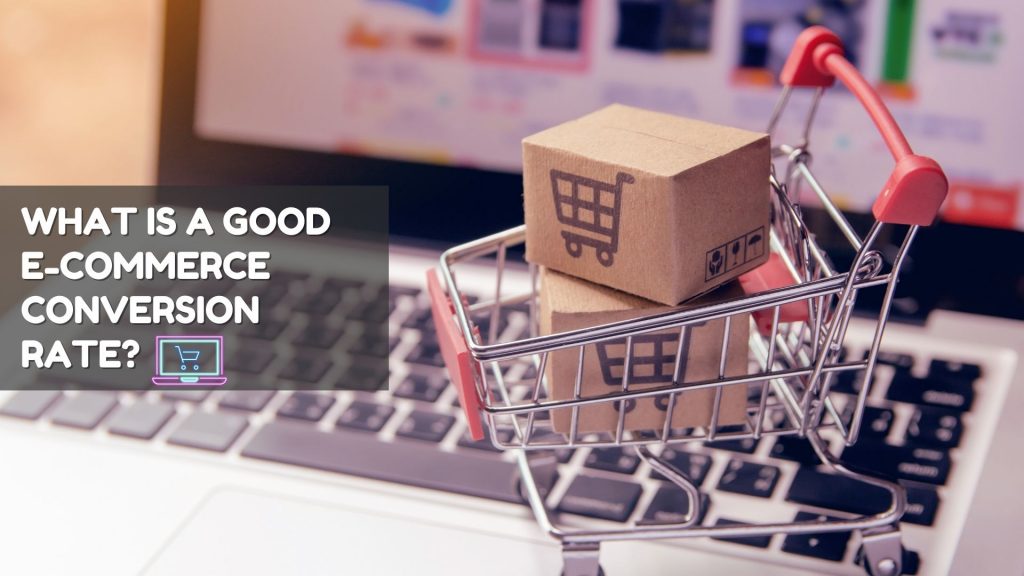
The conversion rate is a crucial metric for e-commerce businesses. Learn why it matters, what elements affect it, and how to calculate it now! Read more!

